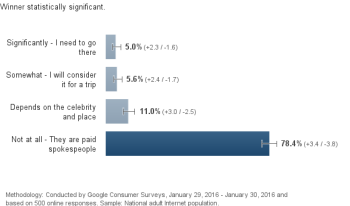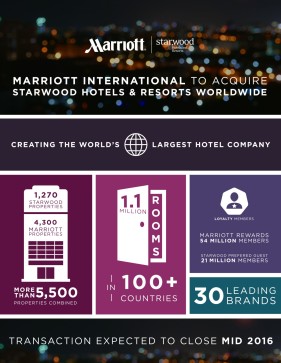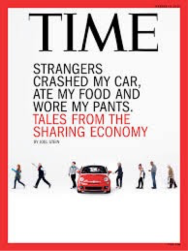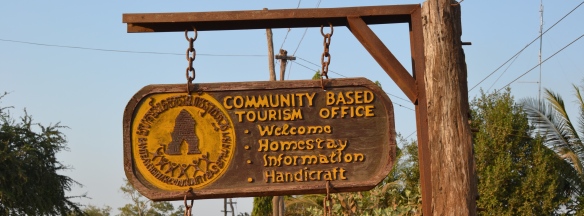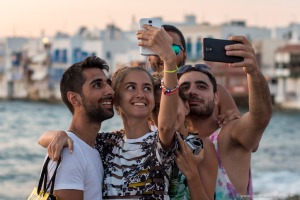I can still remember the reaction I got from my former Arthur Andersen/Accenture colleagues (that’s 30 years ago) when I told them I was going to work in the tourism industry. “Shut the front door” doesn’t begin to cover it.
And for a large part of those years, a big part of every tourism professional’s mission was to garner the political and social respect to which we, the tourism industry, felt we were entitled. We rationalized our predicament to a lack of understanding/caring by the policy-makers and opinion-influencers of the day. (Never mind the uncomfortable reality that the tourism industry has a terrible track record of effective communications beyond its own stakeholders.)
We resorted to creating endless economic impact studies showing astonishing tax and employment datapoints meant to stop politicians in their tracks when considering funding requests and policies that impacted the tourism industry.
The tourism industry became the biggest marketing machine in the world. The unspoken axiom became “Tourism is good for everybody. More tourism is even better.”
And it worked. I guess.

Fast forward to 2018 and tourism is an intensely competitive $2.3 trillion global industry supporting 108 million jobs (source: 2017 WTTC Economic Impact World report). There’s a case to be made that tourism is now the biggest industry on the planet. Even North Korea is in the tourism business in order to generate sufficient hard currency for who knows what.
Be careful what you wish for. Not all that glitters is gold.
The words of Eminem and Robert Plant (he stole it from Shakespeare) are becoming hauntingly relevant as tourism’s big money and expanding footprint are helping it get the political and social attention it has sought for years…but not necessarily in a good way:
- Cash-strapped governments are increasingly turning to tourists and their growing tax streams as low political risk targets to fund everything from public safety to day care signage, proving once and for all that lodging taxes do not belong to hoteliers;
- Tourists are flocking to destinations like Barcelona, the Great Barrier Reef and Iceland, disrupting the quality of life/place that attracted them in the first place, prompting a tourism backlash from enraged locals who are asking “who invited/needs them anyways?”; and
- Sex-tourism and human trafficking are an increasingly dark parasite that is growing as tourism spreads into less developed destinations.
Simply put, “Tourism is good for everybody. More tourism is even better.” doesn’t necessarily fly any more. Its time for the tourism industry to expand its definition of success beyond tourism spending and employment to also focus on legacy – how can tourism sustainably improve the quality of life in a host destination community?
The good news is that some tourism thought-leaders and policy-makers are starting to talk about it:
- “Overtourism” was a hot topic at recent World Travel and Tourism Council (WTTC) meetings and reflected in a 2017 McKinsey report on Tourism overcrowding.
- BestCities – a global business events alliance of some of the words foremost meetings and events destinations – is partnering with global associations to help establish social and educational legacies in their host destination communities that endure well beyond the dates of the event.
At the local destination level however, its a much bigger challenge. Stakeholder dynamics (particularly in North America) tend to position the generation of transactions as the ultimate measure of success and also as justification for the existence of the destination marketing organization.
Tourism has clearly established its global and local economic relevance. And it’s not going away anytime soon. As its economic power has grown, so too has its responsibility for a bigger purpose. Issues like overtourism and human trafficking – legacies of the worst kind – demonstrate that we need to think bigger than increasing economic impact numbers and also focus on how we manage tourism’s considerable quality of life legacies at the destination community level.
It might also mean it’s time we rethink “more is better” and consider “less is more”.




 For the last four years I have been on the client-side of the college recruiting ecosystem, not as the decision-maker but as the parent eventually writing the check. And as the process reaches its conclusion this month I could not help but reflect on the similarities between the college recruiting and destination marketing (particular for meetings and events) ecosystems:
For the last four years I have been on the client-side of the college recruiting ecosystem, not as the decision-maker but as the parent eventually writing the check. And as the process reaches its conclusion this month I could not help but reflect on the similarities between the college recruiting and destination marketing (particular for meetings and events) ecosystems: Finally…of course the destination is a critical part of the final decision. And college marketers know this. Every college we considered integrated elements of their host destination as part of their overall brand story, value proposition and engagement marketing. (
Finally…of course the destination is a critical part of the final decision. And college marketers know this. Every college we considered integrated elements of their host destination as part of their overall brand story, value proposition and engagement marketing. (
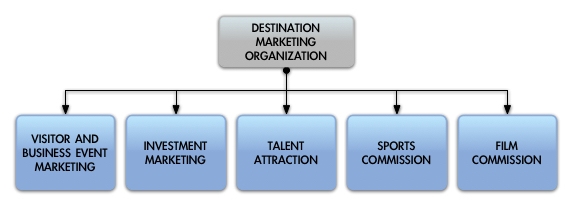
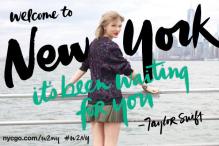
 Australia (Chris Hemsworth): Tourism Australia hired him to follow in the steps of perhaps the world’s most famous tourism ambassador, Paul Hogan. To a whole generation of travelers and more, Crocodile Dundee was the embodiment of all things Australia. It will be interesting if consumers come to associate Mr. Hemsworth as much with Australia as they already do with Asgaard.
Australia (Chris Hemsworth): Tourism Australia hired him to follow in the steps of perhaps the world’s most famous tourism ambassador, Paul Hogan. To a whole generation of travelers and more, Crocodile Dundee was the embodiment of all things Australia. It will be interesting if consumers come to associate Mr. Hemsworth as much with Australia as they already do with Asgaard. North Dakota (Josh Duhamel): North Dakota is one of the US’s least visited states and its most widely-known story-line of late involves a wood-chipper in the academy award-winning movie Fargo. Hiring native son Josh Duhamel to tell tales from the “Peace Garden State” appears to be working with a reported 20% increase in visitor guide distribution during 2015. No word on his impact on wood-chipper sales.
North Dakota (Josh Duhamel): North Dakota is one of the US’s least visited states and its most widely-known story-line of late involves a wood-chipper in the academy award-winning movie Fargo. Hiring native son Josh Duhamel to tell tales from the “Peace Garden State” appears to be working with a reported 20% increase in visitor guide distribution during 2015. No word on his impact on wood-chipper sales.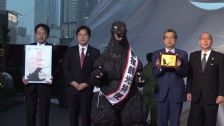 Tokyo (Godzilla): The appointment of Godzilla will have boomers reminiscing about their exploits at drive-in movies but I am not sure how it extends the Tokyo brand story. It was brilliant, however, in terms of generating press releases and photo ops. At least Godzilla’s not at-risk for inappropriate social media behavior.
Tokyo (Godzilla): The appointment of Godzilla will have boomers reminiscing about their exploits at drive-in movies but I am not sure how it extends the Tokyo brand story. It was brilliant, however, in terms of generating press releases and photo ops. At least Godzilla’s not at-risk for inappropriate social media behavior.